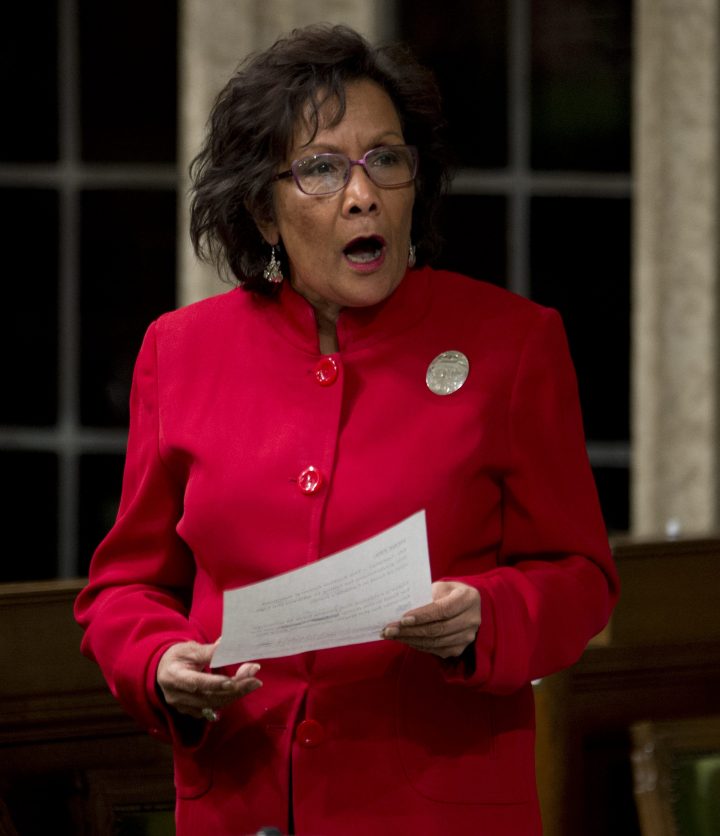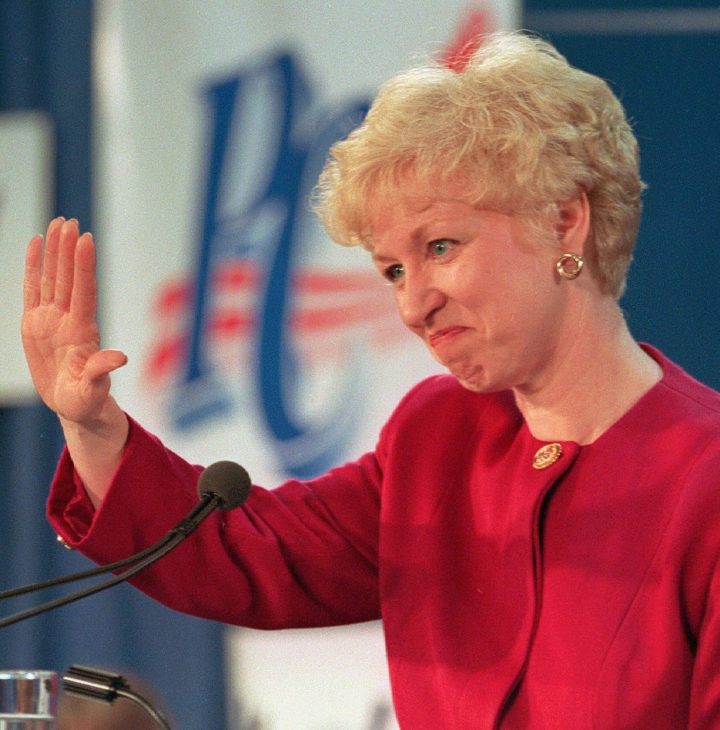It was one of the standout viral videos of the 2015 Canadian election: a man stands beside a tree holding a stack of custom-made campaign signs, flipping them over one-by-one to spell out a message.

“My name is Matt Masters Burgener,” the first card reads. “Because I am running against Stephen Harper … There is no way I can win this riding.”
One card after another, the NDP candidate for Calgary Heritage lays out his David-versus-Goliath fight with Harper, the sitting prime minister who, at the time, had a stranglehold on his solidly Conservative riding.
“I absolutely refuse to believe … that Canadians can rise up against him … by simply voting,” Masters’ cards say. “And it’s crazy to think … I can turn things around.”
And then, he turns things around. The video starts playing in reverse, and as the cards magically fall back into the candidate’s arms, they spell out a message of hope.
“I can turn things around … and it’s crazy to think … by simply voting … that Canadians can rise up against him,” the cards say. “I absolutely refuse to believe … we are conservative by nature … I know this because I know Canadians … and Canadians want Stephen Harper defeated.”
Masters didn’t defeat Harper in Calgary Heritage, but he did capture national attention with his anti-Harper message. His video picked up more than 236,000 views on YouTube, and he did more than 20 media interviews.
“That was a video that resonated all across the country,” Masters recently told Global News.
“It didn’t necessarily get me a million votes, but I think it helped take down Stephen Harper.”
Masters is part of a small but plucky fraternity of Canadians who have gone head to head with a sitting prime minister in his or her home riding in hopes of knocking off the nation’s leader at the local level. Most of these people become sacrificial lambs offered up in the name of democracy. But that doesn’t mean their efforts are in vain.
“When you’re running against a prime minister … there’s a spotlight that’s different,” Masters said. “It gives you an opportunity to use that spotlight.”
Taking on an (almost) unbeatable prime minister
Sitting prime ministers have held onto their seats in almost every election since 1867, with just a handful of exceptions. So why do parties even try to unseat the PM?
“It’s to legitimately say that they’re being represented from coast to coast to coast,” said Stéphanie Plante, who works at the University of Ottawa’s Centre for Interdisciplinary Research on Citizenship and Minorities.
Plante says parties want to run everywhere so they can take advantage of election finance laws and so they aren’t simply handing a seat to a rival party leader.
However, many challengers wind up becoming so-called “paper candidates” with limited party resources to back their run, she says.
“Nobody’s going to the opening of your riding office. Nobody’s going to put signs in for you. You’re basically treated like an afterthought,” said Plante.

Get daily National news
These circumstances can be a perfect trial by fire for a rookie candidate, she says — a situation which can be daunting.
“It’s kind of a mind-boggling thing,” Masters said.
“It’s not something you ever really consider, that you’ll be in an election head to head against the prime minister.”
Masters says he didn’t have much support so he tried to use creativity to overcome his lack of resources. He also hoped to ride the so-called “orange wave” that had swept the NDP into power at the provincial level in Alberta.

Candidates who challenge the PM are typically rewarded later on, according to Nelson Wiseman, a political science professor at the University of Toronto.
“You’re establishing your bona fides with the party,” Wiseman told Global News. “You’re establishing that you’re a good team player and that you can be relied upon so that you might be rewarded down the line with an appointment to the Senate or to one of the agencies, boards or commissions.”
Masters, who was running for the NDP in that 2015 battle, did not get a high-profile appointment for running against Harper. Instead, he enjoyed a few weeks of the spotlight before going back to his work as a musician.
However, he’s still glad he ran because it let him try out a wide range of creative ideas during an otherwise doomed campaign. He created his own campaign signs, solicited donations to put custom messages on those signs and even rode a horse through his riding to call out Harper.
“I thought that with a good campaign, I could make a difference,” he said. “If you’re going to be sacrificed, why don’t you put on a fancy hat?”
The last candidate who unseated the PM
The last person to successfully take down a sitting Canadian prime minister is Liberal candidate Hedy Fry, who ended Kim Campbell’s brief 132-day tenure as prime minister by defeating her in Vancouver Centre in 1993. Former PMs Arthur Meighen and William Lyon MacKenzie King also lost their seats during a tumultuous period in the 1920s.
Campbell’s defeat came at a particularly low point in the Conservative Party’s history, according to Plante. She says voters had soured on Brian Mulroney at the time, and Campbell faced their wrath as his successor.
“Mulroney was insanely unpopular,” Plante said. She added that Campbell “did herself no favours” with several controversial comments on the campaign trail.
Fry says she won because Campbell simply wasn’t around to fight her for the riding.
“The prime minister lost re-election because she was never there,” Fry told Global News from Vancouver, where she is once again running as the incumbent Liberal candidate.
Fry was a doctor and a newcomer to politics in 1993, and she wasn’t so sure she could win. However, she was well known at the national level for her “Doctor, Doctor” segment on CBC’s Hockey Night in Canada and for her role as the Canadian Medical Association’s spokesperson.
Fry says she won because she did the legwork, knocking on doors and talking to people in her riding while Campbell was jetting around the country in an effort to prop up her party.
Fry acknowledges that a party leader’s duties go well beyond his or her own riding. But where most leaders will schedule a visit or two to their riding during the campaign, Campbell did not.
Fry ultimately defeated Campbell by fewer than 400 votes on election day, and she’s held onto the riding ever since. Now, at 78 years old, she’s an incumbent candidate trying to extend her tenure as the longest-serving female member of Parliament.
Taking on Trudeau in 2019
Liberal Leader (and incumbent PM) Justin Trudeau won his Papineau, Que., riding handily in 2015 with 51.98 per cent of the vote.
Nevertheless, he’s facing 11 contenders in the riding this year, including candidates from the five other major parties.
Conservative Leader Andrew Scheer seemed to recognize the symbolic value of targeting Trudeau’s riding early in the 2019 campaign. Scheer held a campaign event in Papineau on Sept. 26 and used his appearance there to attack Trudeau on a variety of fronts.

Scheer also used his visit to meet with Sophie Veilleux, the Conservative candidate taking on Trudeau in Papineau.
Veilleux did not respond to Global News’ requests for comment. However, Wiseman expects she’ll be rewarded for challenging Trudeau, even if it’s a losing effort.
“The Conservative Party knows they’re not going to win Papineau,” Wiseman said. “All the parties know that.”
The candidates in Trudeau’s riding have not staged any viral stunts to date, but Wiseman says it’s really not about taking Trudeau’s seat. It’s about putting up a good fight.
“There are rewards for being a good soldier. That’s really what you’re doing there.”
Masters ultimately placed third in the 2015 campaign, collecting 7.3 per cent of the vote in Calgary Heritage while Harper was reelected with 63.8 per cent. And he has a different message for anyone who tries to take down a PM in the future.
“Go for it,” he said. “Go for broke.”










Comments